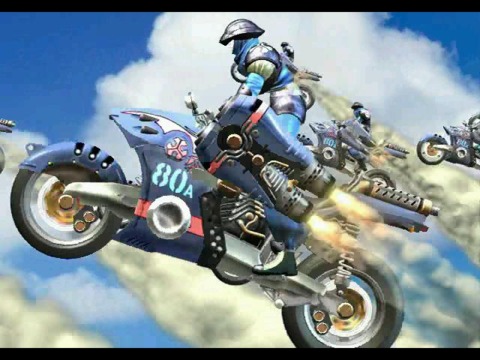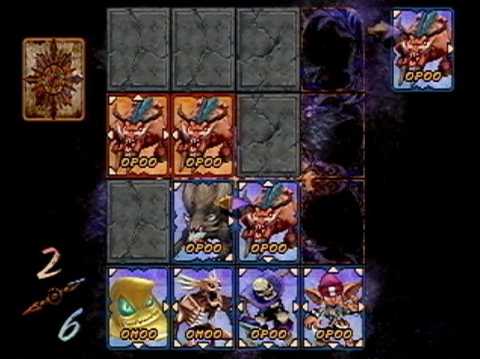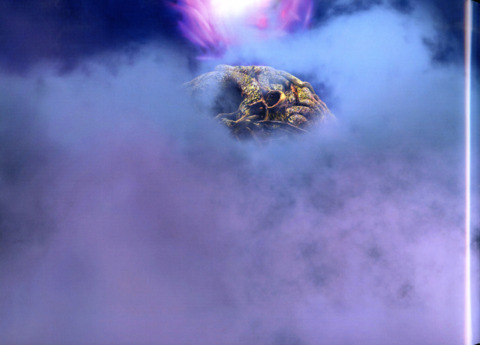When the World Ends There’ll Be Me, You, and a Card Game
By thatpinguino 18 Comments
In order to prepare for the Giantbomb Community Endurance Run I’ve been playing a lot of Final Fantasy IX recently and that has got me thinking about the PS1 Final Fantasy games again (not that it takes a lot of outside prompting). The Final Fantasy series is famous for its almost complete shift of setting and tone from game to game and there is no greater shift in the series than the shift from FFVIII to FFIX. Those two games have so many structural and thematic differences that playing the two back-to-back could give you tonal whiplash. The protagonists are largely opposites: a gloomy introvert vs. an enthusiastic extrovert. The setting of each game represents one of the two warring factions of popular fiction: sci-fi vs. high fantasy. The gameplay systems even skew towards different extremes: radical innovation and classless characters vs. comfortable nostalgia and rigid class structures. However, there is one odd piece of connective tissue that ties FFVIII and FFIX together in a way that no other games in the series are joined: a trading card game. The trading card games in FFVIII and FFIX are interwoven into just about every game system, npc, and story moment to an almost comical extent. By enmeshing these two card games so thoroughly into their respective worlds, the designers at Square created two worlds where trading cards play literally transcends time and space and becomes an inextricable part of life.

Triple Triad and Tetra Master propagate throughout every continent and civilization in each game and these card games are huge cultural unifiers in their respective worlds. Almost every citizen you talk to can be challenged to a card game if you talk to them with the square button instead of the x button. From Shumi to Dwarves to humans to Black Mages, every culture is up for a friendly game of cards. Presidents, sorceresses, regents, and convicts all share one common, insatiable hobby. This urge to play Triple Triad or Tetra Master is so strong that people will even play games during times of huge political upheaval or violent strife. People trapped in Galbadia Garden during the Garden battle will gladly play you in Triple Triad after pleading for their lives. People in Lindblum will take a brief break from rebuilding their city after Atomos attacks to play a few hands of Tetra Master. There is no situation so dire as to prevent a card game.
The card games in FFVIII and FFIX are also linked to several other systems in interesting ways. Cards in both games can be obtained by killing monsters and picking up cards off of their polygonal corpses. I shudder to think about how you would win a card by killing a monster, but it would seem that the characters in the Final Fantasy-verse are nonplussed by the experience. I would at least hope that the cards aren’t made of cardboard; cardboard doesn’t react well to being soaked in viscera. In FFVIII you can even transform monsters into cards by using the Card command ability (I always thought of this move as stealing a monster’s soul a la Fatal Frame). Triple Triad cards can continue the conversion conga line by being refined into items which can then be refined into any number of items or magic. The cards you win or find in the world of FFVIII can indirectly improve your combat abilities, your weapons, and even your rapport with your Guardian Forces. Triple Triad is so integrated into FFVIII’s larger systems that you can break FFVIII’s combat system by solely playing cards.

FFIX’s card game is not as all-consuming as FFVIII’s; however, it certainly ties into the world in some interesting ways. You can find Tetra Master cards throughout the cities of Gaia by searching the many exclamation points that pop up in corners and bushes. My personal favorite in-world card is the Lindblum card that you can find in the rubble of Lindblum after Alexandria invades. I like to think that that card functions the same way that monster cards do: once Lindblum is defeated its card is left in the remains. Tetra Master cards also lurk in many of the treasure chests that you can find during the chocobo sidequest. Many of the most powerful cards in FFIX lie in ancient treasure chests alongside legendary weapons and jewel caches. The cards of FFIX only indirectly impact the combat system once in the game, during the Card tournament in Treno. In that tournament you can win a Rebirth Ring if you defeat a Tetra Master master. The Rebirth Ring is quite a useful item and getting one for free is a boon to any playthrough of FFIX. It is worth noting that to get any benefit, beyond the joy of winning, out of FFIX’s cardgame you need to actually win a tournament. In contrast, FFVIII’s card game confers plenty of bonuses simply by accruing cards through battle and modifying them into useful items. In any case, the complex gameplay systems of both of these Final Fantasy games are tied to their card games in a number of interesting ways.
The most puzzling aspect of the card games in FFVIII and FFIX is that they are some of the only social constructs that survive the cataclysms that occur at the end of both games. In FFVIII the world undergoes time compression and all of time is smooshed into one continuous moment. The only people who survive the violent time smooshing are the main villain Ultimecia, Squall and his buddies, the Queen of Cards, and the CC Group (if you complete their sidequest). In the time compressed world every city is rendered un-enterable and all of civilization seems to have fallen prey to Ultimecia’s whims, but the Queen of Cards and the CC Group still remain to reign over Triple Triad in the post-apocalypse. While the decision to keep some card loving citizens alive on disc four makes sense from a game design perspective (since the only way to play Triple Triad is to challenge an npc to a game), this decision can have considerable story ramifications if taken at face value. If the only people capable of surviving time compression are Triple Triad aficionados and supremely powerful beings, it lends some level of gravitas to Triple Triad itself. Triple Triad becomes some inextricable part of the world of FFVIII, something that literally always has been and always will be part of the world. Civilizations are transient, but card games are eternal.

In FFIX’s fourth disc the world is not time compressed in the way FFVIII’s world is; however, Gaia has its own physical representation of the history of all creation: Memoria. Memoria is FFIX’s final dungeon and it is the physical manifestation of the memories of all living things throughout time. As you travel through Memoria you run backwards through time. First you witness events that occurred earlier in the game, like the attack on Alexandria. Then you start to witness locations that existed before FFIX’s opening, like the primordial seas of Gaia and its early civilizations. Finally, you start to see the creation of the world itself, outer space, and the crystal that made everything. The whole journey is surreal and it highlights just how transient individual lives can be when looking at things from the perspective of all creation. There are no people in Memoria, save for Garland’s disembodied, guiding narration. Yet, Tetra Master exists in Memoria. At various points in Memoria you will find exclamation points that seem to have no function, if you press the usual x button. But, if you press square, you find out that those exclamation points represent Tetra Master playing ghosts from eons past. There are five ghosts in all and each of them possesses rare cards that you cannot find anywhere else in the game. When viewed practically, these ghosts function as final bosses for players who delved into Tetra Master throughout their playthrough. However, when viewed symbolically, these ghosts, like the Queen of Cards and CC Group in FFVIII, show that Tetra Master is a card game that has been played since the origin of life itself. While the ghosts of kings and queens are nowhere to be found, there are still card sharks winning ethereal games with their best decks.
While many of the Final Fantasy games feature deep sidequests and minigames with exceptional rewards, the extent to which trading card games are integrated into the worlds of FFVIII and FFIX is truly remarkable. Only FFX’s blitzball is as integrated into the story and the mechanics of its world as Triple Triad and Tetra Master are integrated into theirs. It’s quite fitting that two games with huge, obsessive followings are filled to the brim with people who are themselves obsessed with a game. It’s also oddly comforting to think that there might be a few card games after the end of the world.
